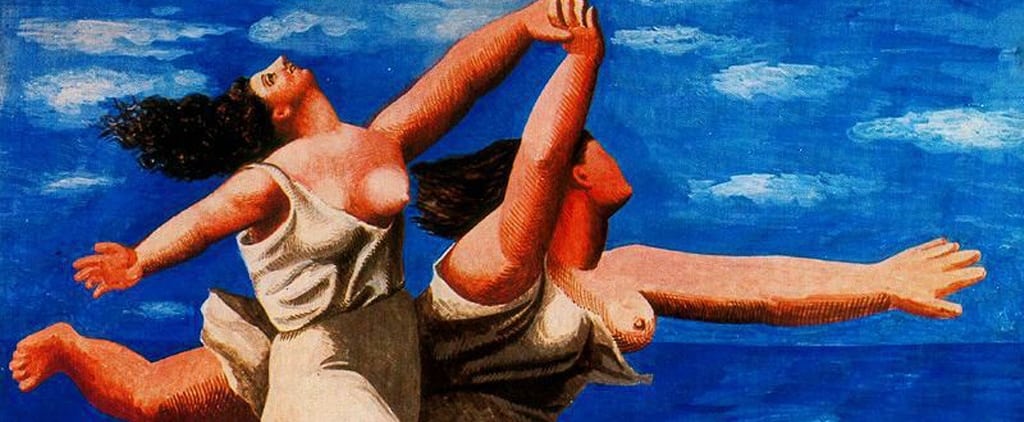[dropcap style=”font-size:100px;color:#992211;]F[/dropcap]rom the ongoing Picasso exhibition exploring the artists Mediterranean influence this book delves deep into the links between the artist’s Spanish symbolic palette and the shell shocked early Modern coastal culture of sun, sexual objects, sons and deified daughters.
A lusciously presented book containing a fertile period in Picasso’s artistic journey through postcards, sketchs, major works, studies and heavy history covers a ten year period where the breadth of Picasso’s work veers from the realist to the abstract without the glib assumption of his future greatness. The book presents the work with enough room for the readers discovery and if we are left wondering how this period was to play out in the paintings of later decades it is scant criticism.
Within a world at war the artist travelled along the Mediterranean and discovered new settings for old inspirations. This period marks an internal journey for the artist when motifs like the harlequin become revisited against a variety of contexts and reading through the book chronologically one gets the sense that Picasso works through his youth, emerging as an artist more temporally located in the now.
The importance of this period also marks Picasso’s journey from a well know artist to a celebrity. Through associations and applications we are able to witness how his creative vision opened creative discussions and deepened the range of what Modern meant as an inspirational source, both for himself and his peers.

Pablo Picasso and scene painters sitting on the front cloth for Parade (Ballets Russes) at the Théâtre du Châtelet, Paris, 1917, Lachmann photographer
It’s remarkable how fresh the work still appears, even now some 100 years after they were completed, that he left the mores and sentiments of the time timorous and shivering in his wake is practically a given but that he still shocks and draws close post-millennial viewers is something else. His work has become a broad church and the majority of his pieces bywords for successful art, perhaps even clichés. However, looking at these pieces is really to see them anew, it’s not so much that the paintings eyes follow you but that your own eyes truly open as the analytical ego quietens and the work itself speaks.
Not that everything produced during this time were masterpieces, through the sketches, source material and passing ideas included we get the sense of the working artist who developed ideas more than the stereotype suggests. The vast stock of background material here is perhaps where the book’s value really lies. From inspiration to preliminary studies to completed works the ability to trace a creative lineage is well documented. In places these connections could have been drawn out with more didactic force however it is a topic that is explored at length elsewhere (For instance, Ultimate Picasso 2003). Moreover, the essays included provide ample grist for the varying levels of reader to pursue their own investigations.
The title Picasso: Between Cubism and Classicism describes this period of Picasso aptly however it also hints at the struggles within the artist himself. It appears he was a classical artist that sought to pursue something of the same appreciations through new means, rather than purporting to be at the vanguard of a new romanticism. It might be that he would have argued that a sense of the nouveau was just so much bourgeois posturing, and that his vision was outwardly ‘timeless’ even if inwardly he was still working through his endangered past. Europe was changing at the time and looking back we can note that the cataclysms of the First World War as traces that would be painted larger in following years.
There is an innocence and play in these works and as the authors state here was an artist coming to grips with his creativity, yet to suffer and display the violence that later life would bring. Picasso: Between Cubism and Classicism is an achievement in scholarship as well as a rewarding insight into this artist fundamental to contemporary art.
Published as part of the project ‘Picasso-Méditerranée’ is association with Musée national Picassp-Paris. Sep 2017-Jan 2018 (published by SKIRA Editore)
Hardcover: 208 pages
ISBN: 978-88-572-3693-3
Purchase via amazon
Main image: Two women-running on the beach the race (1922)
Exhibition info: https://www.scuderiequirinale.it/

The aim of art is to represent not the outward appearance of things, but their inward significance. – Aristotle



















